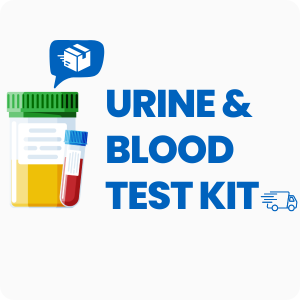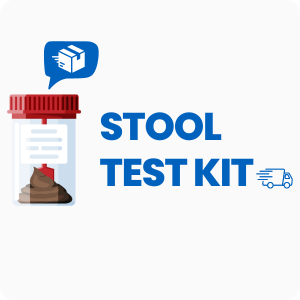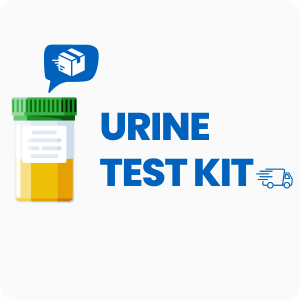Ordering the Heavy Metal Hair Analysis | Toxic & Essential Elements | Canada
The Heavy Metal Hair Analysis | Toxic & Essential Elements by Doctor’s Data provides a detailed look at both toxic and essential elements stored in the body over time. This test uses a small hair sample to measure exposure to metals like lead, mercury, and arsenic, as well as important nutrients such as zinc and magnesium. Interestingly, hair analysis can reveal long-term exposure to certain metals that may not show up in blood or urine, making it a useful tool for tracking past exposures.
Ordering this test is simple and can be done online. Here are some specific benefits of ordering:
- Noninvasive collection using only 0.25 grams of hair
- Detects both toxic metals and essential nutrients in one report
- Helps monitor exposure from environmental or occupational sources
- Supports chelation protocols, including Andy Cutler’s method
- Provides a result-specific report for easy review with your healthcare provider
Who Should Consider Heavy Metal and Essential Element Screening
People who have unexplained fatigue, trouble focusing, or ongoing digestive issues may benefit from this screening, especially if they have lived in older homes, worked in certain industries, or used products known to contain heavy metals. For example, someone who has recently moved into a home built before 1970 and is experiencing new symptoms may want to check for possible lead or other metal exposure.
Ordering this screening may also be helpful in these situations:
- Living near industrial areas or high-traffic roads
- Using well water or private water sources
- Following a chelation protocol for metal detoxification
- Having a history of frequent fish consumption
- Using imported herbal supplements, which can sometimes contain unexpected metal contaminants
Testing for metals and minerals can help identify hidden exposures and imbalances that may affect energy, mood, and body function. Delaying this screening could allow ongoing exposure to go unnoticed, making it harder to address symptoms or prevent further buildup.
How to Prepare for Hair Element Analysis
Fasting is not required for this test, and you can collect your hair sample at any time of day. Always follow any instructions provided by your doctor or healthcare practitioner to make sure your sample is collected and handled correctly.
Labs Included When Ordering Your Heavy Metal Hair Analysis | Toxic & Essential Elements
| Test Name | Reference Range | Significance | Low and High Levels of Heavy Metal Hair Analysis | Toxic & Essential Elements |
|---|---|---|---|
| Toxic Metals | |||
| Aluminum | <7.0 | Aluminum is a common environmental metal that can build up in the body from cookware, water, or food. High levels may affect the nervous system. | High levels mean possible exposure from sources like antacids, cookware, or water.
Low levels mean minimal recent exposure or effective elimination. |
| Antimony | <0.10 | Antimony is used in flame retardants and batteries. It can enter the body through air, water, or skin contact. | High levels mean increased contact with industrial materials or contaminated water.
Low levels mean little to no recent exposure. |
| Arsenic | <0.10 | Arsenic is found in some foods, water, and pesticides. Long-term exposure can affect skin, nerves, and organs. | High levels mean possible exposure from contaminated water, rice, or seafood.
Low levels mean no significant recent exposure. |
| Barium | <1.0 | Barium is used in some medical tests and industrial products. It can enter the body through water or dust. | High levels mean possible exposure from industrial sources or contaminated water.
Low levels mean little to no recent exposure. |
| Beryllium | <0.02 | Beryllium is used in electronics and aerospace. Exposure can happen through air or dust in certain workplaces. | High levels mean possible workplace or environmental exposure.
Low levels mean no significant exposure detected. |
| Bismuth | <0.20 | Bismuth is found in some medicines and cosmetics. It is less toxic than other heavy metals but can build up with overuse. | High levels mean frequent use of bismuth-containing products.
Low levels mean little to no recent exposure. |
| Cadmium | <0.10 | Cadmium is found in batteries, tobacco smoke, and some foods. It can affect the kidneys and bones over time. | High levels mean exposure from smoking, batteries, or contaminated food.
Low levels mean no significant recent exposure. |
| Lead | <0.50 | Lead is a toxic metal found in old paint, pipes, and some imported goods. It can affect the brain and nervous system. | High levels mean possible exposure from old paint, pipes, or imported products.
Low levels mean no significant recent exposure. |
| Mercury | <1.0 | Mercury is found in some fish, dental fillings, and thermometers. It can affect nerves and organs if it builds up. | High levels mean exposure from fish, dental work, or broken thermometers.
Low levels mean no significant recent exposure. |
| Nickel | <0.50 | Nickel is used in coins, jewelry, and some foods. It can cause skin reactions and build up in the body. | High levels mean exposure from jewelry, coins, or certain foods.
Low levels mean no significant recent exposure. |
| Silver | <0.20 | Silver is found in jewelry, water filters, and some medicines. It is less toxic but can build up with overuse. | High levels mean frequent use of silver-containing products.
Low levels mean little to no recent exposure. |
| Platinum | <0.01 | Platinum is used in jewelry and car parts. It is rare in the environment but can build up with certain exposures. | High levels mean exposure from jewelry or industrial sources.
Low levels mean no significant recent exposure. |
| Thallium | <0.01 | Thallium is a rare metal used in electronics and some pesticides. It is highly toxic in large amounts. | High levels mean possible exposure from industrial or contaminated sources.
Low levels mean no significant recent exposure. |
| Thorium | <0.01 | Thorium is a radioactive metal found in some industrial settings. Exposure is rare but can happen in certain jobs. | High levels mean possible workplace exposure.
Low levels mean no significant recent exposure. |
| Tin | <0.50 | Tin is used in cans, solder, and some plastics. It is less toxic but can build up with repeated exposure. | High levels mean exposure from canned foods or industrial sources.
Low levels mean no significant recent exposure. |
| Titanium | <1.0 | Titanium is found in some implants, paints, and cosmetics. It is generally considered safe but can build up in rare cases. | High levels mean exposure from implants, paints, or cosmetics.
Low levels mean no significant recent exposure. |
| Uranium | <0.01 | Uranium is a radioactive metal found in some rocks and water. Exposure is rare but can happen in certain areas. | High levels mean possible environmental or occupational exposure.
Low levels mean no significant recent exposure. |
| Essential Elements | |||
| Boron | 0.10–0.50 | Boron helps with bone strength and the use of other minerals. It is found in fruits, vegetables, and nuts. | High levels mean excess intake from supplements or water.
Low levels mean possible low intake from food or poor absorption. |
| Calcium | 200–1200 | Calcium is important for bones, teeth, and muscle function. It is found in dairy, leafy greens, and fortified foods. | High levels mean possible overuse of supplements or high intake.
Low levels mean possible low intake or absorption issues. |
| Chromium | 0.10–0.50 | Chromium helps the body use sugar and fat. It is found in whole grains, meats, and some fruits. | High levels mean excess intake from supplements.
Low levels mean possible low intake or increased loss. |
| Cobalt | 0.01–0.10 | Cobalt is part of vitamin B12, which helps make red blood cells. It is found in animal foods and supplements. | High levels mean excess supplement use or exposure.
Low levels mean possible low intake or absorption issues. |
| Copper | 10–30 | Copper helps with iron use and nerve function. It is found in nuts, seeds, and shellfish. | High levels mean excess intake or exposure from pipes.
Low levels mean possible low intake or absorption issues. |
| Germanium | <0.10 | Germanium is found in some plants and supplements. Its role in the body is not fully understood. | High levels mean excess supplement use.
Low levels mean little to no recent intake. |
| Iodine | 0.10–1.0 | Iodine is needed for thyroid function. It is found in seafood, dairy, and iodized salt. | High levels mean excess intake from supplements or seaweed.
Low levels mean possible low intake or thyroid issues. |
| Iron | 10–50 | Iron is needed for red blood cells and energy. It is found in meats, beans, and fortified foods. | High levels mean excess intake or storage problems.
Low levels mean possible low intake or blood loss. |
| Lithium | 0.01–0.10 | Lithium is a trace mineral found in water and some foods. It is sometimes used in medicine for mood support. | High levels mean excess intake from water or supplements.
Low levels mean little to no recent intake. |
| Magnesium | 30–120 | Magnesium helps with muscle, nerve, and heart function. It is found in nuts, seeds, and leafy greens. | High levels mean excess intake from supplements.
Low levels mean possible low intake or absorption issues. |
| Manganese | 0.10–0.50 | Manganese helps with bone and enzyme function. It is found in nuts, grains, and leafy vegetables. | High levels mean excess intake or exposure from water.
Low levels mean possible low intake or absorption issues. |
| Molybdenum | 0.01–0.10 | Molybdenum helps the body use proteins and other nutrients. It is found in beans, grains, and nuts. | High levels mean excess intake from supplements.
Low levels mean possible low intake or absorption issues. |
| Phosphorus | 100–300 | Phosphorus is important for bones and energy. It is found in meats, dairy, and nuts. | High levels mean excess intake or kidney issues.
Low levels mean possible low intake or absorption issues. |
| Potassium | 10–50 | Potassium helps with muscle and nerve function. It is found in fruits, vegetables, and dairy. | High levels mean excess intake or kidney issues.
Low levels mean possible low intake or loss from sweating. |
| Rubidium | 0.10–0.50 | Rubidium is a trace mineral found in some foods. Its role in the body is not fully understood. | High levels mean excess intake from supplements.
Low levels mean little to no recent intake. |
| Selenium | 0.50–2.0 | Selenium helps with thyroid and immune function. It is found in nuts, seafood, and grains. | High levels mean excess intake from supplements.
Low levels mean possible low intake or absorption issues. |
| Sodium | 50–200 | Sodium helps with fluid balance and nerve function. It is found in salt and many processed foods. | High levels mean excess intake from salt or processed foods.
Low levels mean possible low intake or loss from sweating. |
| Strontium | 0.10–0.50 | Strontium is found in some foods and water. It is sometimes used in supplements for bone support. | High levels mean excess intake from supplements or water.
Low levels mean little to no recent intake. |
| Sulfur | 100–500 | Sulfur is needed for protein and enzyme function. It is found in meats, eggs, and some vegetables. | High levels mean excess intake from food or supplements.
Low levels mean possible low intake or absorption issues. |
| Vanadium | 0.01–0.10 | Vanadium is a trace mineral found in some foods. Its role in the body is not fully understood. | High levels mean excess intake from supplements.
Low levels mean little to no recent intake. |
| Zinc | 100–250 | Zinc helps with immune function and wound healing. It is found in meats, beans, and nuts. | High levels mean excess intake from supplements.
Low levels mean possible low intake or absorption issues. |
| Zirconium | <0.10 | Zirconium is used in ceramics and some medical devices. It is not needed by the body but can be measured if exposure occurs. | High levels mean exposure from ceramics or medical devices.
Low levels mean no significant recent exposure. |
Reference ranges may change slightly as labs update their methods and guidelines.
Heavy Metal Hair Analysis | Toxic & Essential Elements FAQ
Is there Heavy Metal Hair Analysis | Toxic & Essential Elements testing near me?
This is a test kit you can use at home, so you can collect your hair sample locally and send it to the lab. If you have concerns about ongoing exposure to metals in your environment, being able to order and collect the sample at your convenience helps you act quickly and easily.
How do I interpret the test results?
While your treating physician should review your results, we also offer a one-on-one test results review with our clinical team to help you understand your report and next steps.
What is the cost of the test?
The price you see includes standard shipping to you and return shipping to the lab, but draw fees may apply. Ordering this test can help you find out if hidden metal exposure is affecting your symptoms, so you can address the cause sooner.
How often should I retest?
Retesting every 6 to 12 months is recommended, especially if you are monitoring changes after reducing exposure or following a detox protocol. Regular testing helps track progress and ensures that any changes in exposure or nutrient status are detected early.
How accurate is the test?
This test uses ICP-MS (Inductively Coupled Plasma Mass Spectrometry), which is highly specific and sensitive for detecting metals in hair, with specificity and sensitivity both above 98%. TrueHealthLabs.com partners with CLIA-certified and CAP-certified laboratories to uphold rigorous testing standards for dependable results.
What are the differences between hair, blood, urine, and stool tests for heavy metal detection?
Hair Testing
- Measures heavy metals accumulated in hair over weeks or months.
- Best suited for detecting long-term exposure, such as past months’ exposures.
- Not effective for recent exposure due to the slow growth rate of hair.
Blood Testing
- Identifies heavy metals currently circulating in the bloodstream.
- Most effective for recent or short-term exposure, such as within a few days or weeks.
- Metal levels decrease quickly as they are absorbed into tissues.
Urine Testing
- Assesses heavy metals being excreted by the body.
- Useful for detecting ongoing exposure or monitoring the body’s detoxification process.
- Can also reveal levels after using agents that release metals from tissues (provocation testing).
Stool Testing
- Shows heavy metals eliminated through the digestive tract.
- Helpful for analyzing how the body excretes metals through the gastrointestinal system, though it may not reflect total body burden.
- Results can vary based on factors like diet, digestion, and the body’s ability to process metals.
- Less standardized than blood and urine tests, making interpretation more complex.
Important Notes
- Customer is responsible for return shipping costs.
Medical Review Board
Reviewed by Jeff Donohue M.D. from Body Logic and Brady Hurst DC, CCCN. Written by True Health Lab’s team of editorial health contributors.
Disclaimer: This information is for educational purposes only and not intended as medical advice. Consult your healthcare provider for personalized guidance.
Why Customers Trust True Health Labs – What People are saying
Also rated 4.6 out of 5 based on 3452 ShopperApproved reviews- See all TrueHealthLabs.com reviews.









